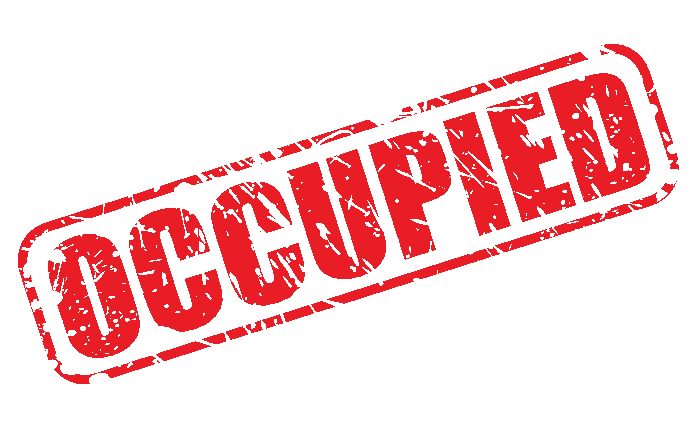This came up the other day and I could not find a blog post that covered it. Maybe it’s here somewhere, but with 1,455(!) published posts, it’s becoming harder to find the needle in the haystack.
I’ve had many Wordless Wednesday and Fixed-it Friday posts showing security devices that facility personnel claim to use only when the building is not occupied. Unfortunately, after a while people may tend to forget that the security bars, hooks, chains, etc. are supposed to be removed during business hours. I’ve yet to find something in a model code that says the egress requirements only apply when the building is occupied.
But there are other code requirements that are affected by whether the building is occupied or not. For example, when the model codes allow a key-operated lock to be used on the main entrance to a retail store, the lock must be unlocked when the building is occupied. So when is a building considered occupied? The answer depends on which code you’re referencing.
The word “occupied” is not defined in the IBC or the IFC. When a term is not defined in these publications, the “ordinarily accepted meaning” applies, as defined in Merriam Webster’s Collegiate Dictionary, 11th Edition. The most applicable definition of “occupied” according to Merriam Webster is “to take up (a place or extent in space)”…not very specific when you’re trying to interpret the codes based on this definition.
 NFPA 101 does include a more prescriptive definition of an occupied building. A building is occupied when any of the following is true:
NFPA 101 does include a more prescriptive definition of an occupied building. A building is occupied when any of the following is true:
(1) It is open for general occupancy.
(2) It is open to the public.
(3) It is occupied by more than 10 persons.
Using the key-operated lock example, according to NFPA 101 the door would have to be unlocked when any of these criteria are met. For example, if the store is open for business but there is only one person inside, the door would have to be unlocked. Conversely, if the store was closed and there were 5 people inside doing inventory, the door could be locked, but NFPA 101 does not allow occupants to be locked beyond their control (except lockups, detention and correctional occupancies, and some types of health care units).
Any questions?
Image: shutterstock/pockygallery
You need to login or register to bookmark/favorite this content.





Understand 101 has been like that forever.
I like IBC, even though silent on definition.
Which to me means if one person is in the building it is occupied.
To me resolves any argument.
When in doubt, specify an exit device…
I wonder if storefronts could benefit from classroom-style locksets? I suspect that many storefront doors which require a key to operate the lock from the inside do so in significant measure to prevent unauthorized persons from locking the door from the inside [thus keeping out other customers or delaying the ability of rescue personnel to respond to a robbery or hostage situation]. A classroom-style lock which could be opened from the inside without a key, but which would require a key to lock, would seem to fit such requirements nicely although the trip design may need to be adapted for a storefront application. What do you think?
I agree with CDA — one person can occupy a building. Therefore, technically, the device could never be used as it takes at least one person to secure the device (presumably from the inside) and once it’s installed, you are still inside the building even if you’re on the way out. Bottom line = don’t use unapproved security devices.